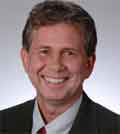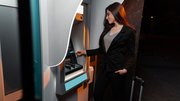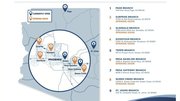News
Countdown to Check 21
As the countdown to Check 21 continues, NCR's Keith Taylor says the window of opportunity is narrowing for banks to educate consumers and drive resulting efficiencies.
April 14, 2004
Facing a six-month countdown to October 2004 when the Check Clearing for the 21st Century Act (Check 21) goes into effect, the banking sector in the United States will undergo a significant transformation in the way it conducts business.
Banks, businesses and consumers will feel the impact of the ripple effect of this legislation that allows for the acceptance of substitute checks in the clearing system and opens the door for check truncation and enhanced imaging technology.
 |
Keith Taylor |
"As a whole, the banking industry is onboard and busily preparing for Check 21. Many individual banks, however, are waiting to finalize their initiatives until they have a better understanding of how specific Regulation CC amendments will impact them," said Alenka Grealish, senior analyst with Celent Communications.
"At this point, consumers are apathetic but we expect them to have questions as soon as image replacement documents are in circulation. Anytime you introduce something unfamiliar, there is a definite learning curve."
NCR Corporation (NYSE: NCR) has been working with banks large and small across the U.S. and worldwide to develop individualized imaging strategies. As a result, NCR has identified five core considerations for banks now preparing to take advantage of the opportunities and efficiencies presented by check truncation and image exchange.
NCR believes the cost of indecision for banks could be tremendous. With an upward cost of $70 billion to process checks in the United States and new competitive pressures from non-banks, it is critical for banks to strategically address Check 21's economic impact, fraud reduction and consumer education.
According to NCR, banks with imaging technology will:
- Have greater opportunity to reduce fraud. Check imaging technology will help to reduce the annual $10 billion check fraud problem in the United States. Transactions will be cleared and returned faster and fraud detected sooner. Banks that remain paper-based may become a target as "bad guys" gravitate to known systems.
- Have a customer service advantage. By deploying check truncation and imaging technology, banks will be able to offer expanded banking hours to both commercial and consumer customers, as well as next-day availability for deposited funds. Customers can access check files 24/7 online. Banks without these services will have a competitive disadvantage.
- Benefit from operational advancements. Faster clearing means faster interbank collection and significant processing cost reductions. To take advantage of these efficiencies, banks must first determine where to capture the check image and how to store that image. Some will capture at the teller window, in the branch back office, at the banks' commercial customers, at the ATM, at the retail point-of-sale or in a central processing area.
- Have new revenue opportunities. Check truncation and image exchange will enable banks to expand service offerings and tap new sources of revenue.
- Reap the greatest customer service rewards if they are able to explain the impact of Check 21 to their customers in plain language. The Federal Reserve is mandating the required legal language that must be distributed to customers through statement inserts. However, regulators are leaving the actual consumer education plans to each financial institution. Frontline and call-center staff must be able to explain and answer customer questions plainly, beyond the legal language.
The author, Keith Taylor is senior vice president of NCR Corporation's Financial Solutions Division. He is responsible for driving growth and improving NCR's capabilities in planning, selling, delivering, and operating its Financial Solutions Division's business, the world's leading provider of ATMs and financial self-service, and a major player in payments and imaging solutions. He has directed successful strategies to take market share in emerging and mature markets and continues to drive the movement from a global manufacturing base to a regional model.














